C语言函数大全 本篇介绍C语言函数大全--g开头的函数(上) 1. gcvt 1.1 函数说明 函数声明 函数功能 char *gcvt(double value, int ndigit, char *buf); 把浮点数转换成字符串,同时返回一个指向字符
C语言函数大全
本篇介绍C语言函数大全--g开头的函数(上)
1. gcvt
1.1 函数说明
char *gcvt(double value, int ndigit, char *buf);
把浮点数转换成字符串,同时返回一个指向字符串的存储位置的指针的函数。
参数: value: 被转换的值。 ndigit: 存储的有效数字位数。 buf: 结果的存储位置。
注意: gcvt 函数把一个浮点值转换成一个字符串 (包括一个小数点和可能的符号字节) 并存储该字符串在 buffer 中。该 buffer 应足够大以便容纳转换的值加上结尾的 结束符
'\0',它是自动添加的。 如果一个缓冲区的大小为 ndigit + 1,则 gcvt 函数将覆盖该缓冲区的末尾。这是因为转换的字符串包括一个小数点以及可能包含符号和指数信息。
1.2 演示示例
#include <stdlib.h>
#include <stdio.h>
int main(void)
{
char str[25];
double num;
int sig = 5;
num = 1.23;
gcvt(num, sig, str);
printf("string = %s\n", str);
num = -456.78912;
gcvt(num, sig, str);
printf("string = %s\n", str);
num = 0.345e5;
gcvt(num, sig, str);
printf("string = %s\n", str);
return(0);
}
1.3 运行结果

2. getarccoords
2.1 函数说明
void getarccoords(struct arccoordstype *arccoords);
取最后一次调用arc的坐标
2.2 演示示例
#include <graphics.h>
#include <stdlib.h>
#include <stdio.h>
#include <conio.h>
int main()
{
int gdriver = DETECT, gmode, errorcode;
struct arccoordstype arcinfo;
int midx, midy;
int stangle = 45, endangle = 270;
char sstr[80], estr[80];
initgraph(&gdriver, &gmode, "");
errorcode = graphresult();
if (errorcode != grOk)
{
printf("Graphics error: %s\n", grapherrormsg(errorcode));
printf("Press any key to halt:");
getch();
exit(1);
}
midx = getmaxx() / 2;
midy = getmaxy() / 2;
setcolor(getmaxcolor());
arc(midx, midy, stangle, endangle, 100);
// 取最后一次调用arc的坐标
getarccoords(&arcinfo);
sprintf(sstr, "*- (%d, %d)", arcinfo.xstart, arcinfo.ystart);
sprintf(estr, "*- (%d, %d)", arcinfo.xend, arcinfo.yend);
outtextxy(arcinfo.xstart, arcinfo.ystart, sstr);
outtextxy(arcinfo.xend, arcinfo.yend, estr);
getch();
closegraph();
return 0;
}
2.3 运行结果
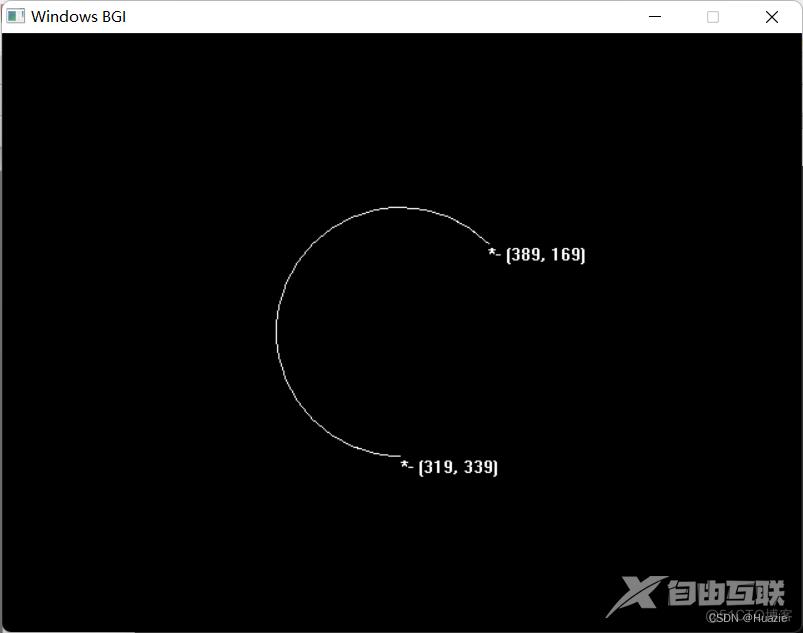
3. getbkcolor
3.1 函数说明
int getbkcolor(void);
获取当前背景颜色
3.2 演示示例
#include <graphics.h>
#include <stdlib.h>
#include <string.h>
#include <stdio.h>
#include <conio.h>
int main(void)
{
int gdriver = DETECT, gmode, errorcode;
int bkcolor, midx, midy;
char bkname[35];
initgraph(&gdriver, &gmode, "");
errorcode = graphresult();
if (errorcode != grOk)
{
printf("Graphics error: %s\n", grapherrormsg(errorcode));
printf("Press any key to halt:");
getch();
exit(1);
}
midx = getmaxx() / 2;
midy = getmaxy() / 2;
setcolor(getmaxcolor());
settextjustify(CENTER_TEXT, CENTER_TEXT);
cleardevice();
for (int i = WHITE; i >= 0; i--)
{
setbkcolor(i);
bkcolor = getbkcolor(); // 获取当前背景颜色
if (i == WHITE) setcolor(BLACK);
else setcolor(WHITE);
itoa(bkcolor, bkname, 10);
strcat(bkname," is the current background color.");
outtextxy(midx, midy, bkname);
getch();
cleardevice();
}
getch();
closegraph();
return 0;
}
3.3 运行结果
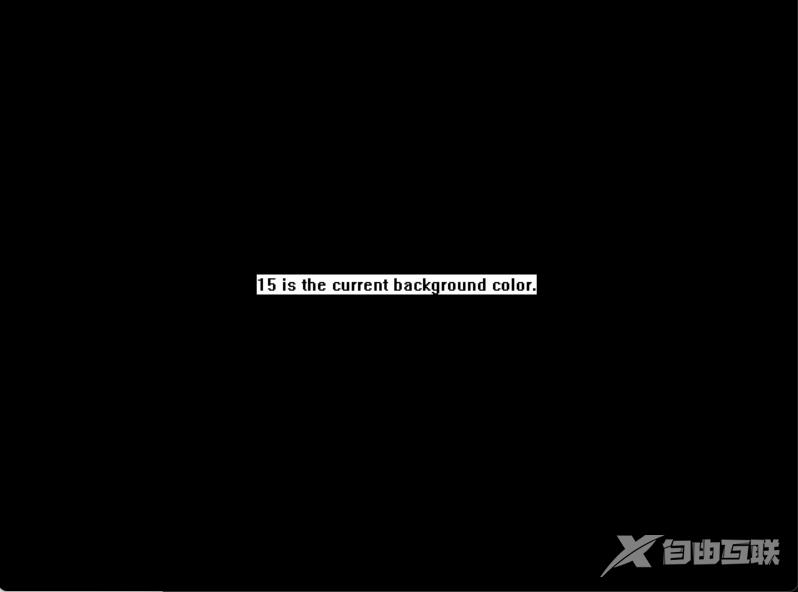
4. getc
4.1 函数说明
int getc(FILE *stream);
从流中取字符
4.2 演示示例
#include <stdio.h>
int main()
{
char ch;
printf("Input a character:");
ch = getc(stdin);
printf("The character input was: '%c'\n", ch);
return 0;
}
4.3 运行结果
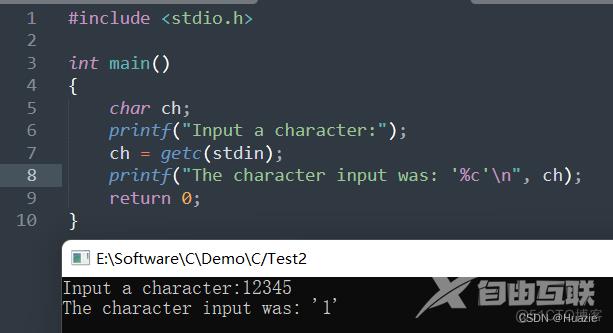
5. getchar
5.1 函数说明
int getchar(void);
从 stdin 流中读字符
5.2 演示示例
#include <stdio.h>
int main(void)
{
int c;
while ((c = getchar()) != '\n')
printf("%c ", c);
return 0;
}
5.3 运行结果
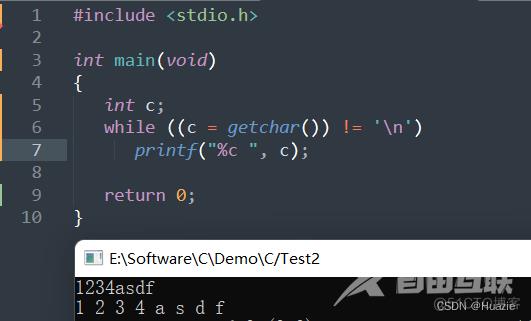
6. getcolor
6.1 函数说明
int getcolor(void);
当前画线的颜色
6.2 演示示例
#include <graphics.h>
int main(void)
{
int gdriver = DETECT, gmode, errorcode;
int color, midx, midy;
char colname[35];
initgraph(&gdriver, &gmode, "");
errorcode = graphresult();
/* an error occurred */
if (errorcode != grOk)
{
printf("Graphics error: %s\n", grapherrormsg(errorcode));
printf("Press any key to halt:");
getch();
exit(1);
}
midx = getmaxx() / 2;
midy = getmaxy() / 2;
setcolor(getmaxcolor());
settextjustify(CENTER_TEXT, CENTER_TEXT);
for (int i = WHITE; i > 0; i--)
{
color = getcolor();
itoa(color, colname, 10);
strcat(colname, " is the current drawing color.");
outtextxy(midx, midy, colname);
getch();
cleardevice();
setcolor(i - 1);
}
getch();
closegraph();
return 0;
}
6.3 运行结果
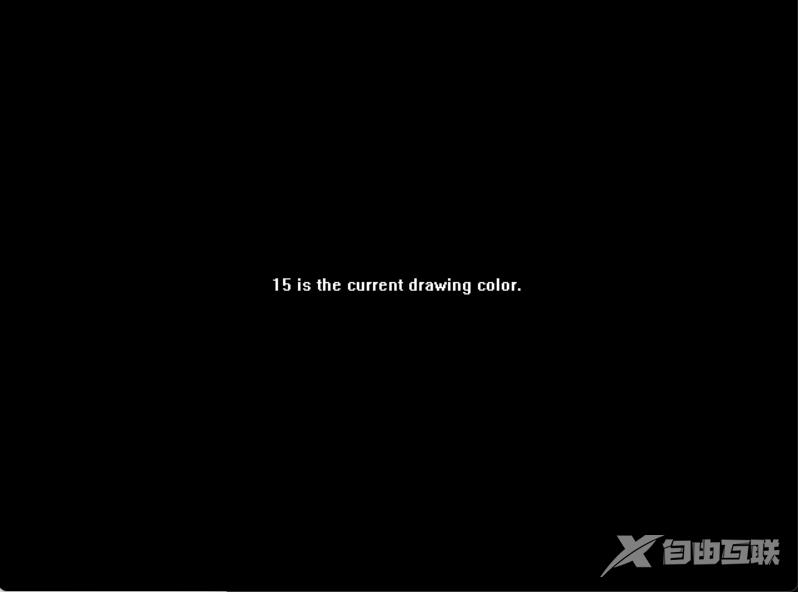
7. getcwd
7.1 函数说明
char *getcwd(char *buffer, int maxlen);
获取当前工作目录
注意:getcwd 函数是将当前工作目录的绝对路径复制到参数 buffer 所指的内存空间中,参数 maxlen 为 buffer 的空间大小。
7.2 演示示例
#include <stdio.h>
#include <dir.h>
#define MAXPATH 1000
int main()
{
char buffer[MAXPATH];
getcwd(buffer, MAXPATH);
printf("The current directory is: %s\n", buffer);
return 0;
}
7.3 运行结果
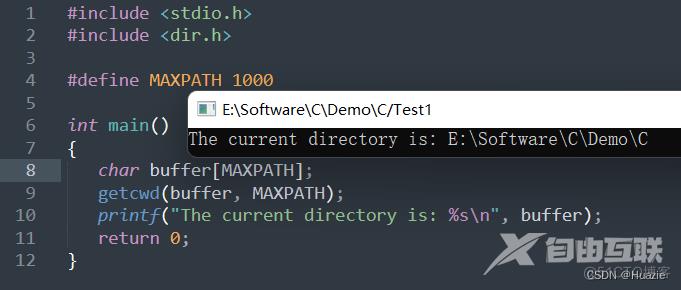
8. getdefaultpalette
8.1 函数说明
struct palettetype* getdefaultpalette(void);
获取调色板定义结构
8.2 演示示例
#include <graphics.h>
#include <stdlib.h>
#include <stdio.h>
int main(void)
{
int gdriver = DETECT, gmode, errorcode;
int i, midx, midy;;
struct palettetype far *pal=NULL;
initgraph(&gdriver, &gmode, "");
errorcode = graphresult();
if (errorcode != grOk)
{
printf("Graphics error: %s\n", grapherrormsg(errorcode));
printf("Press any key to halt:");
getch();
exit(1);
}
midx = getmaxx() / 3;
midy = getmaxy() / 2;
setcolor(getmaxcolor());
// 获取调色板定义结构
pal = getdefaultpalette();
char buffer[100];
for (i=BLACK; i<WHITE + 1; i++)
{
sprintf(buffer, "colors[%d] = %d", i, pal->colors[i]);
outtextxy(midx, midy, buffer);
getch();
cleardevice();
}
getch();
closegraph();
return 0;
}
8.3 运行结果
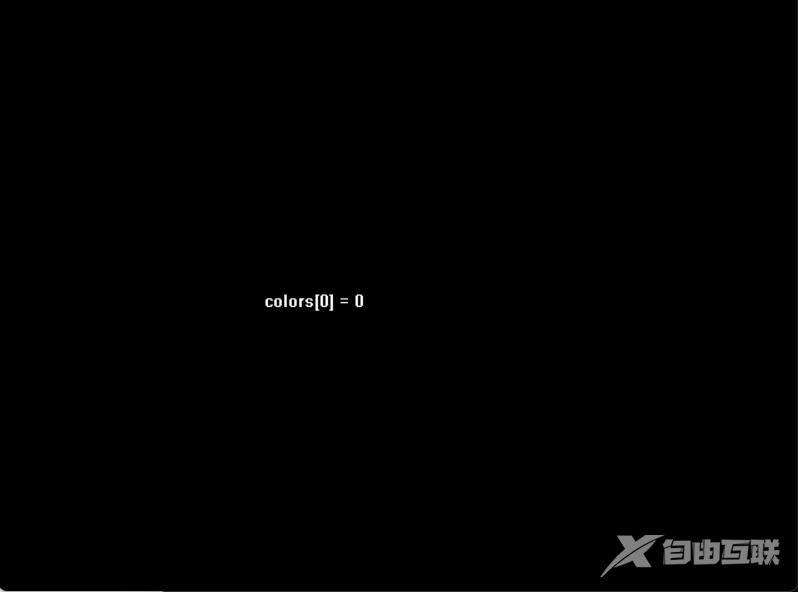
9. getdrivername
9.1 函数说明
char *getdrivename(void);
获取当前图形驱动程序名字
9.2 演示示例
#include <graphics.h>
#include <stdlib.h>
#include <stdio.h>
#include <conio.h>
int main(void)
{
int gdriver = DETECT, gmode, errorcode;
char *drivername;
initgraph(&gdriver, &gmode, "");
errorcode = graphresult();
if (errorcode != grOk)
{
printf("Graphics error: %s\n", grapherrormsg(errorcode));
printf("Press any key to halt:");
getch();
exit(1);
}
setcolor(getmaxcolor());
// 当前图形驱动程序名字
drivername = getdrivername();
settextjustify(CENTER_TEXT, CENTER_TEXT);
outtextxy(getmaxx() / 2, getmaxy() / 2, drivername);
getch();
closegraph();
return 0;
}
9.3 运行结果
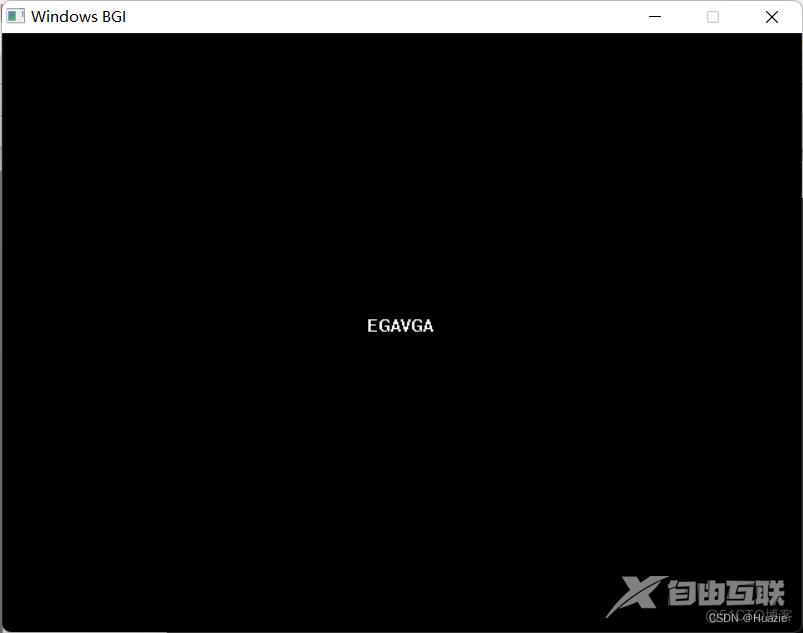
10. getfillpattern
10.1 函数说明
void getfillpattern(char *upattern);
将用户定义的填充模式拷贝到内存中
10.2 演示示例
#include <graphics.h>
#include <stdio.h>
int main(void)
{
int gdriver = DETECT, gmode, errorcode;
int maxx, maxy;
char pattern[8] = {0x00, 0x70, 0x20, 0x27, 0x25, 0x27, 0x04, 0x04};
initgraph(&gdriver, &gmode, "");
errorcode = graphresult();
if (errorcode != grOk)
{
printf("Graphics error: %s\n", grapherrormsg(errorcode));
printf("Press any key to halt:");
getch();
exit(1);
}
maxx = getmaxx();
maxy = getmaxy();
setcolor(getmaxcolor());
// 选择用户定义的填充模式
setfillpattern(pattern, getmaxcolor());
bar(0, 0, maxx, maxy);
getch();
// 将用户定义的填充模式拷贝到内存中
getfillpattern(pattern);
pattern[0] += 1;
pattern[1] -= 2;
pattern[2] += 3;
pattern[3] -= 4;
pattern[4] += 5;
pattern[5] -= 6;
pattern[6] += 7;
pattern[7] -= 8;
// 选择用户定义的填充模式
setfillpattern(pattern, getmaxcolor());
bar(0, 0, maxx, maxy);
getch();
closegraph();
return 0;
}
10.3 运行结果
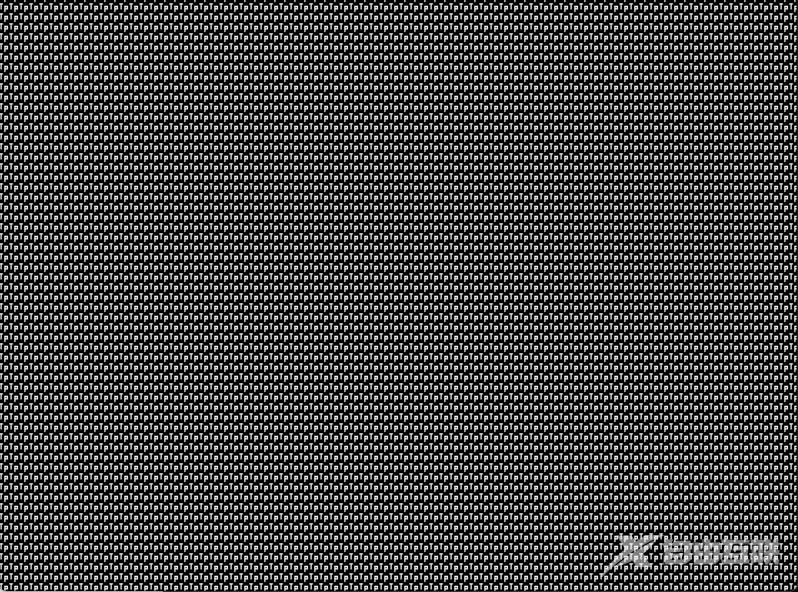
11. getfillsettings
11.1 函数说明
void getfillsettings(struct fillsettingstype *fillinfo);
获取有关当前填充模式和填充颜色的信息
11.2 演示示例
#include <graphics.h>
#include <stdlib.h>
#include <stdio.h>
// the names of the fill styles supported
char *fname[] = { "EMPTY_FILL",
"SOLID_FILL",
"LINE_FILL",
"LTSLASH_FILL",
"SLASH_FILL",
"BKSLASH_FILL",
"LTBKSLASH_FILL",
"HATCH_FILL",
"XHATCH_FILL",
"INTERLEAVE_FILL",
"WIDE_DOT_FILL",
"CLOSE_DOT_FILL",
"USER_FILL"
};
int main()
{
int gdriver = DETECT, gmode, errorcode;
struct fillsettingstype fillinfo;
int midx, midy;
char patstr[40], colstr[40];
initgraph(&gdriver, &gmode, "");
errorcode = graphresult();
if (errorcode != grOk)
{
printf("Graphics error: %s\n", grapherrormsg(errorcode));
printf("Press any key to halt:");
getch();
exit(1);
}
midx = getmaxx() / 2;
midy = getmaxy() / 2;
// 获取有关当前填充模式和填充颜色的信息
getfillsettings(&fillinfo);
sprintf(patstr, "%s is the fill style.", fname[fillinfo.pattern]);
sprintf(colstr, "%d is the fill color.", fillinfo.color);
settextjustify(CENTER_TEXT, CENTER_TEXT);
outtextxy(midx, midy, patstr);
outtextxy(midx, midy+2*textheight("W"), colstr);
getch();
closegraph();
return 0;
}
11.3 运行结果
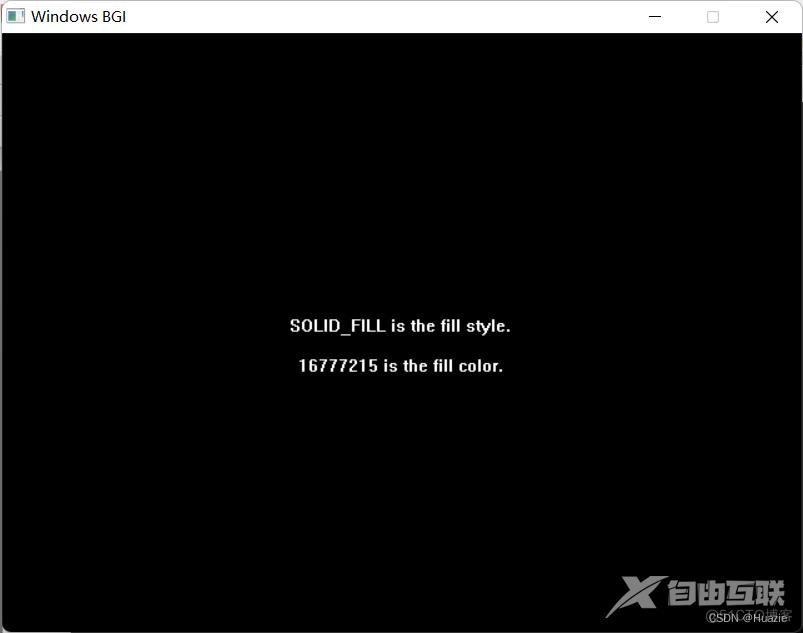
12. getgraphmode
12.1 函数说明
int getgraphmode(void);
获取当前图形模式
12.2 演示示例
#include <graphics.h>
int main(void)
{
int gdriver = DETECT, gmode, errorcode;
int midx, midy, mode;
char numname[80], modename[80];
initgraph(&gdriver, &gmode, "");
errorcode = graphresult();
if (errorcode != grOk)
{
printf("Graphics error: %s\n", grapherrormsg(errorcode));
printf("Press any key to halt:");
getch();
exit(1);
}
midx = getmaxx() / 2;
midy = getmaxy() / 2;
// 获取当前图形模式
mode = getgraphmode();
sprintf(numname, "%d is the current mode number.", mode);
sprintf(modename, "%s is the current graphics mode", getmodename(mode));
settextjustify(CENTER_TEXT, CENTER_TEXT);
outtextxy(midx, midy, numname);
outtextxy(midx, midy+2*textheight("W"), modename);
getch();
closegraph();
return 0;
}
12.3 运行结果
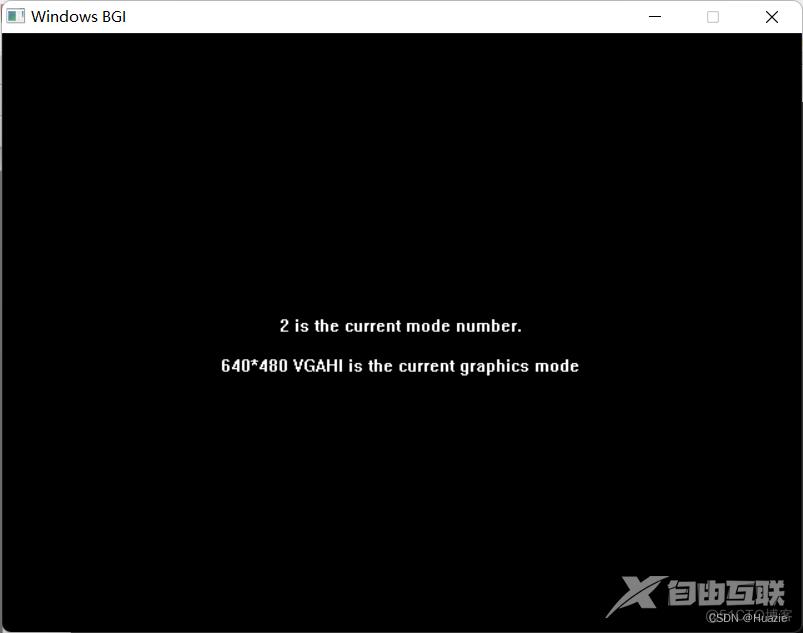
13. getimage
13.1 函数说明
void getimage(int left, int top, int right, int bottom, void *bitmap);
保存指定区域的屏幕上的像素图形到指定的内存区域
13.2 演示示例
#include<graphics.h>
int main()
{
int driver,mode;
unsigned size;
void *buf;
driver=DETECT;
mode=0; initgraph(&driver,&mode,"");
setcolor(15);
rectangle(20,20,200,200);
setcolor(RED);
line(20,20,200,200);
setcolor(GREEN);
line(20,200,200,20);
getch();
size=imagesize(20,20,200,200);
if(size!=-1)
{
buf=malloc(size);
if(buf)
{
getimage(20,20,200,200,buf);
putimage(100,100, buf,COPY_PUT);
putimage(300,50, buf,COPY_PUT);
}
}
outtext("press a key");
getch();
return 0;
}
13.3 运行结果
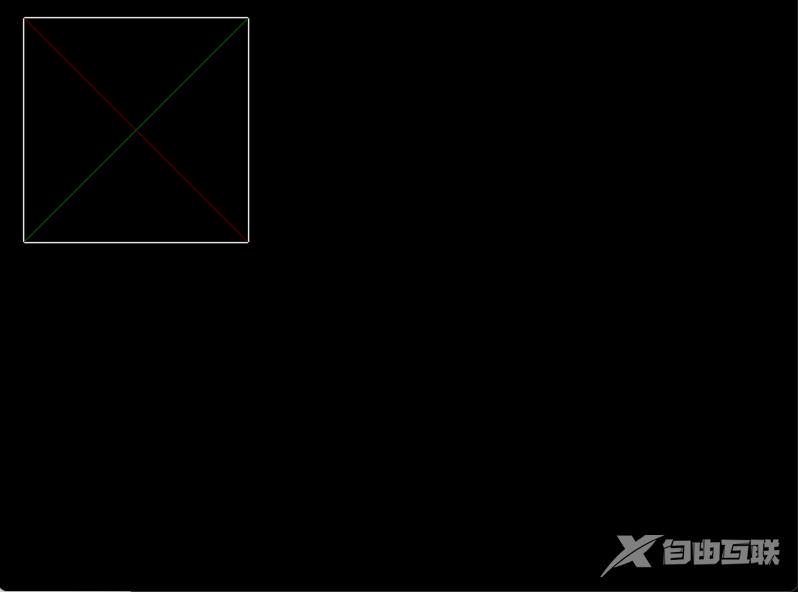
14. getlinesettings
14.1 函数说明
void getlinesettings(struct linesettingstype *lininfo);
取当前线型、模式和宽度
14.2 演示示例
#include <graphics.h>
#include <stdlib.h>
#include <stdio.h>
// the names of the line styles supported
char *lname[] = { "SOLID_LINE",
"DOTTED_LINE",
"CENTER_LINE",
"DASHED_LINE",
"USERBIT_LINE"
};
int main()
{
int gdriver = DETECT, gmode, errorcode;
struct linesettingstype lineinfo;
int midx, midy;
char lstyle[80], lpattern[80], lwidth[80];
initgraph(&gdriver, &gmode, "");
errorcode = graphresult();
if (errorcode != grOk)
{
printf("Graphics error: %s\n", grapherrormsg(errorcode));
printf("Press any key to halt:");
getch();
exit(1);
}
midx = getmaxx() / 2;
midy = getmaxy() / 2;
// 取当前线型、模式和宽度
getlinesettings(&lineinfo);
sprintf(lstyle, "%s is the line style.", lname[lineinfo.linestyle]);
sprintf(lpattern, "0x%X is the user-defined line pattern.", lineinfo.upattern);
sprintf(lwidth, "%d is the line thickness.", lineinfo.thickness);
settextjustify(CENTER_TEXT, CENTER_TEXT);
outtextxy(midx, midy, lstyle);
outtextxy(midx, midy+2*textheight("W"), lpattern);
outtextxy(midx, midy+4*textheight("W"), lwidth);
getch();
closegraph();
return 0;
}
14.3 运行结果
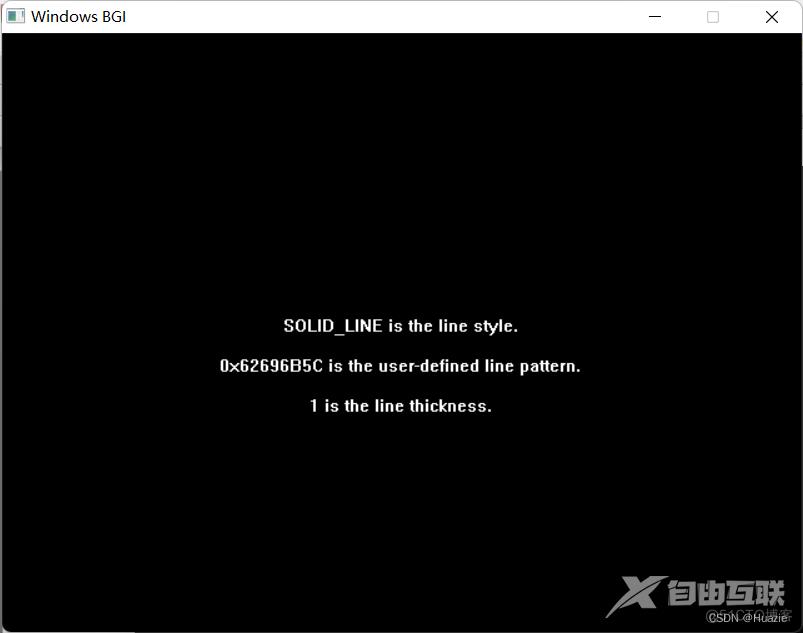
15. getmaxcolor
15.1 函数说明
int getmaxcolor(void);
可以传给函数 setcolor 的最大颜色值
15.2 演示示例
#include <graphics.h>
#include <stdlib.h>
#include <stdio.h>
int main(void)
{
int gdriver = DETECT, gmode, errorcode;
int midx, midy;
char colstr[80];
initgraph(&gdriver, &gmode, "");
errorcode = graphresult();
if (errorcode != grOk)
{
printf("Graphics error: %s\n", grapherrormsg(errorcode));
printf("Press any key to halt:");
getch();
exit(1);
}
midx = getmaxx() / 2;
midy = getmaxy() / 2;
sprintf(colstr, "This mode supports colors 0~%d", getmaxcolor());
settextjustify(CENTER_TEXT, CENTER_TEXT);
outtextxy(midx, midy, colstr);
getch();
closegraph();
return 0;
}
15.3 运行结果
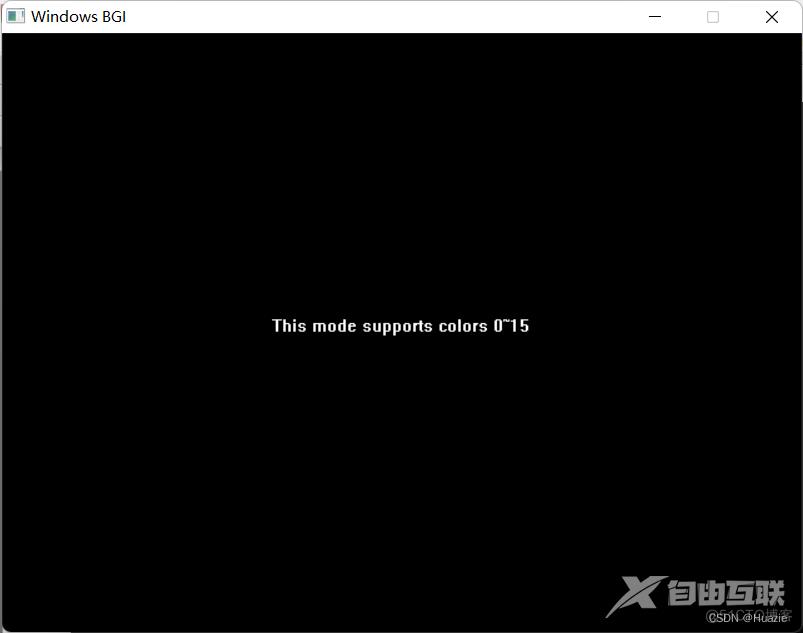
16. getmaxx,getmaxy
16.1 函数说明
int getmaxx(void);
屏幕的最大x坐标
int getmaxy(void);
屏幕的最大y坐标
16.2 演示示例
#include <graphics.h>
#include <stdlib.h>
#include <stdio.h>
int main(void)
{
int gdriver = DETECT, gmode, errorcode;
int midx, midy;
char xrange[80], yrange[80];
initgraph(&gdriver, &gmode, "");
errorcode = graphresult();
if (errorcode != grOk)
{
printf("Graphics error: %s\n", grapherrormsg(errorcode));
printf("Press any key to halt:");
getch();
exit(1);
}
midx = getmaxx() / 2;
midy = getmaxy() / 2;
sprintf(xrange, "X values range from 0~%d", getmaxx());
sprintf(yrange, "Y values range from 0~%d", getmaxy());
settextjustify(CENTER_TEXT, CENTER_TEXT);
outtextxy(midx, midy, xrange);
outtextxy(midx, midy+2*textheight("W"), yrange);
getch();
closegraph();
return 0;
}
16.3 运行结果
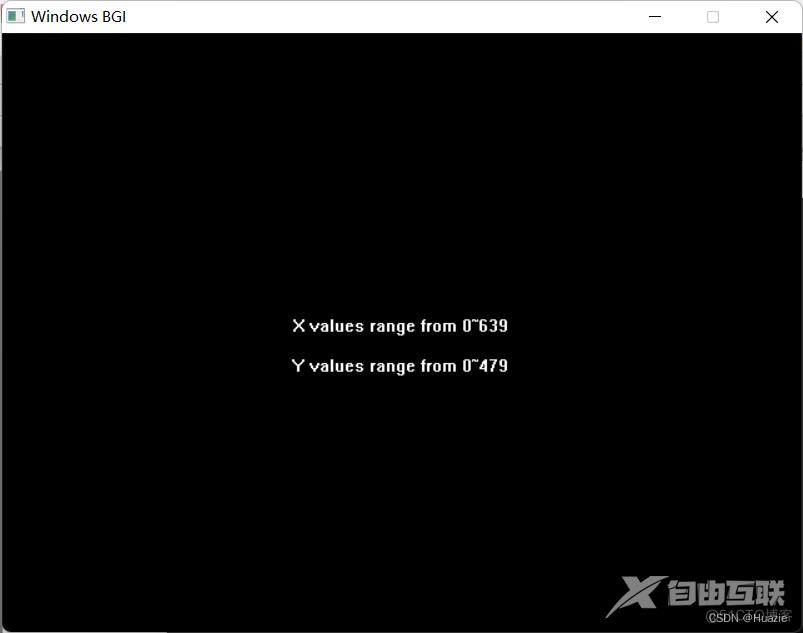
参考
- [API Reference Document]
